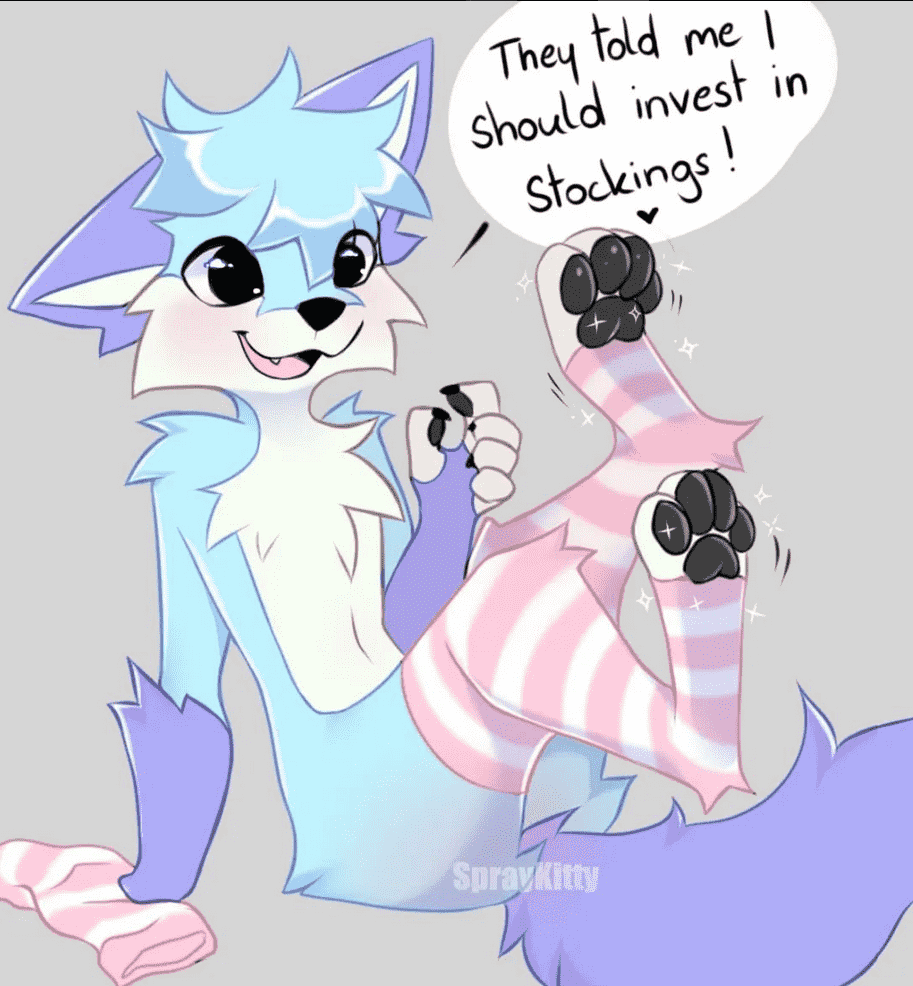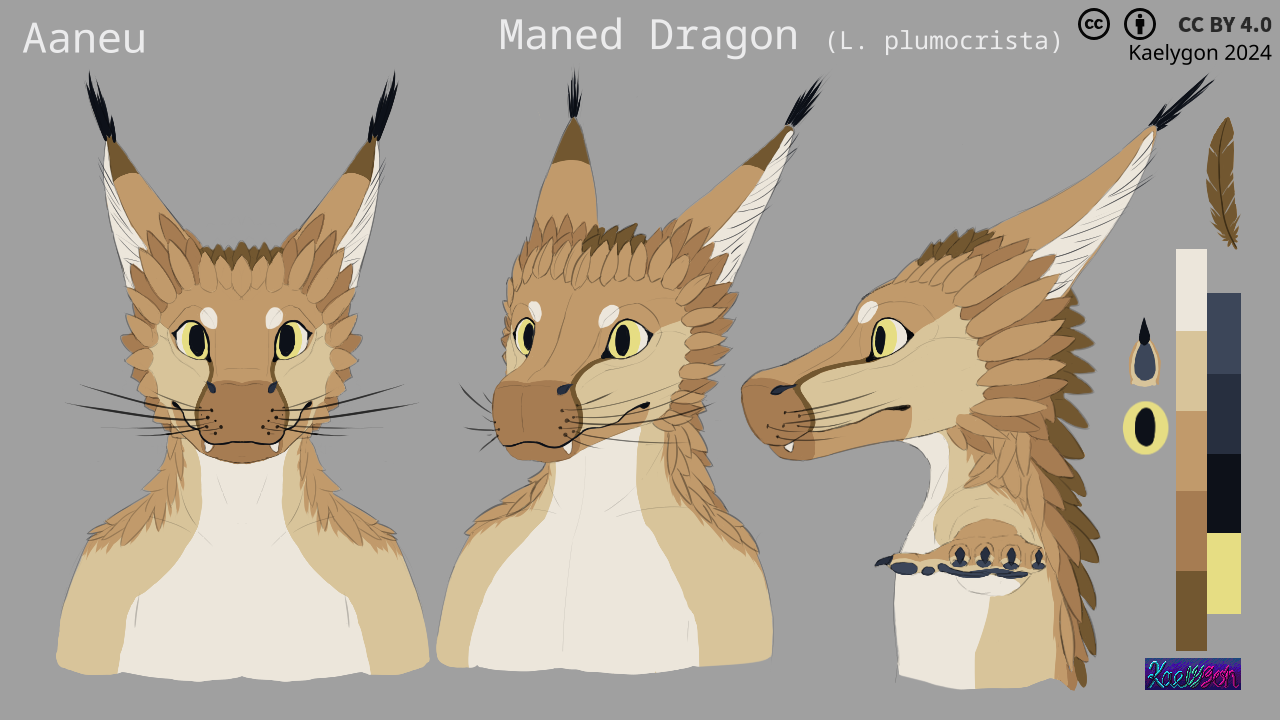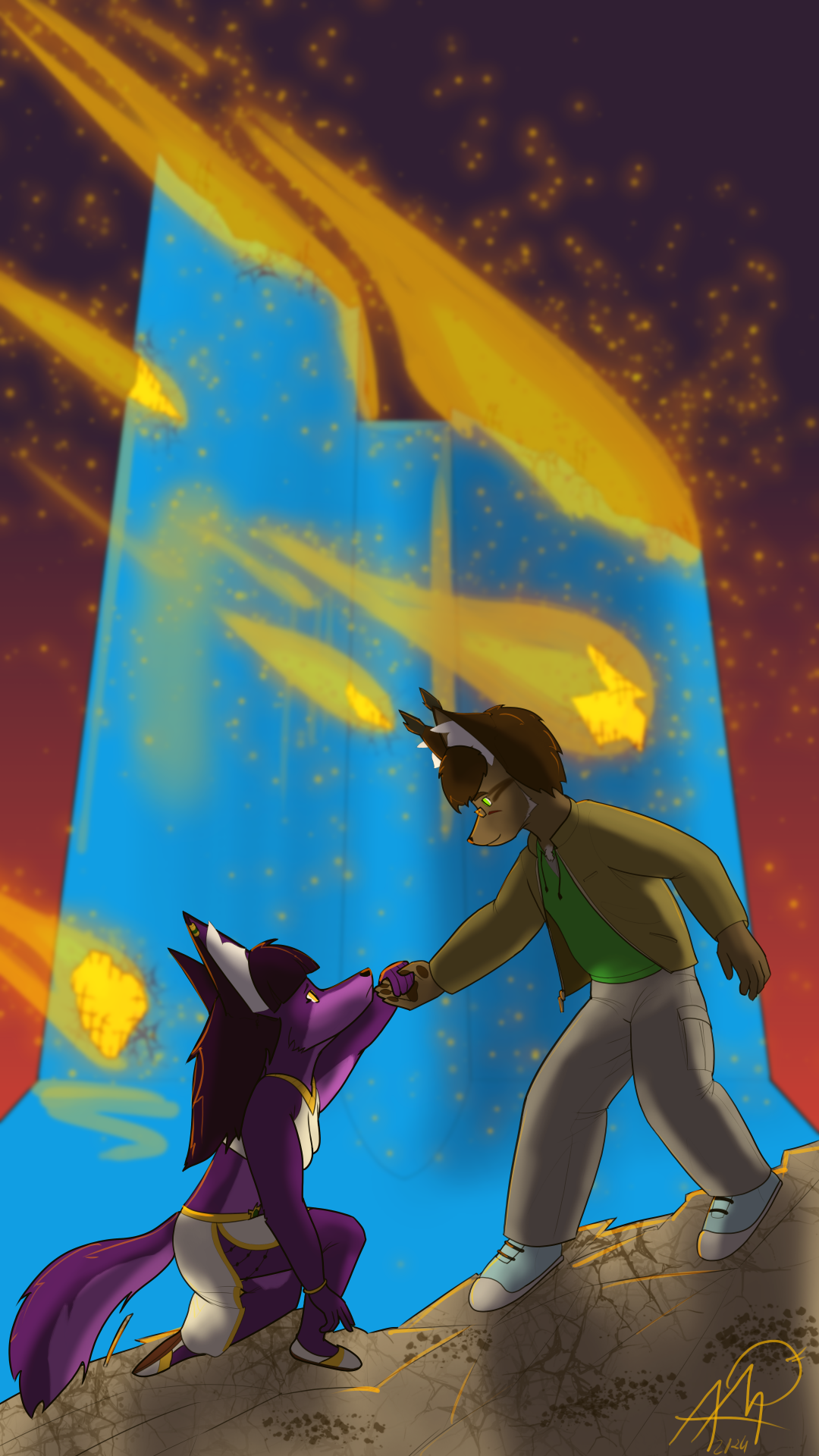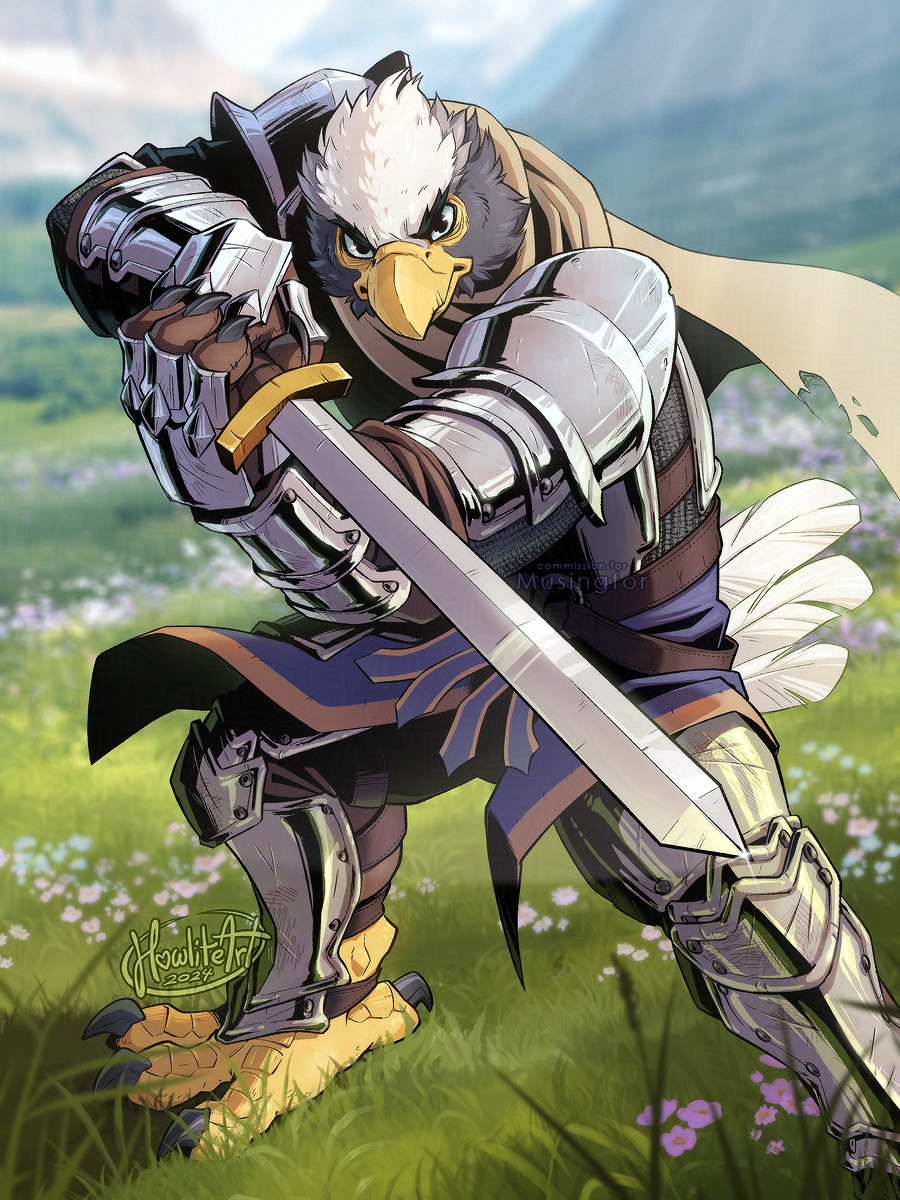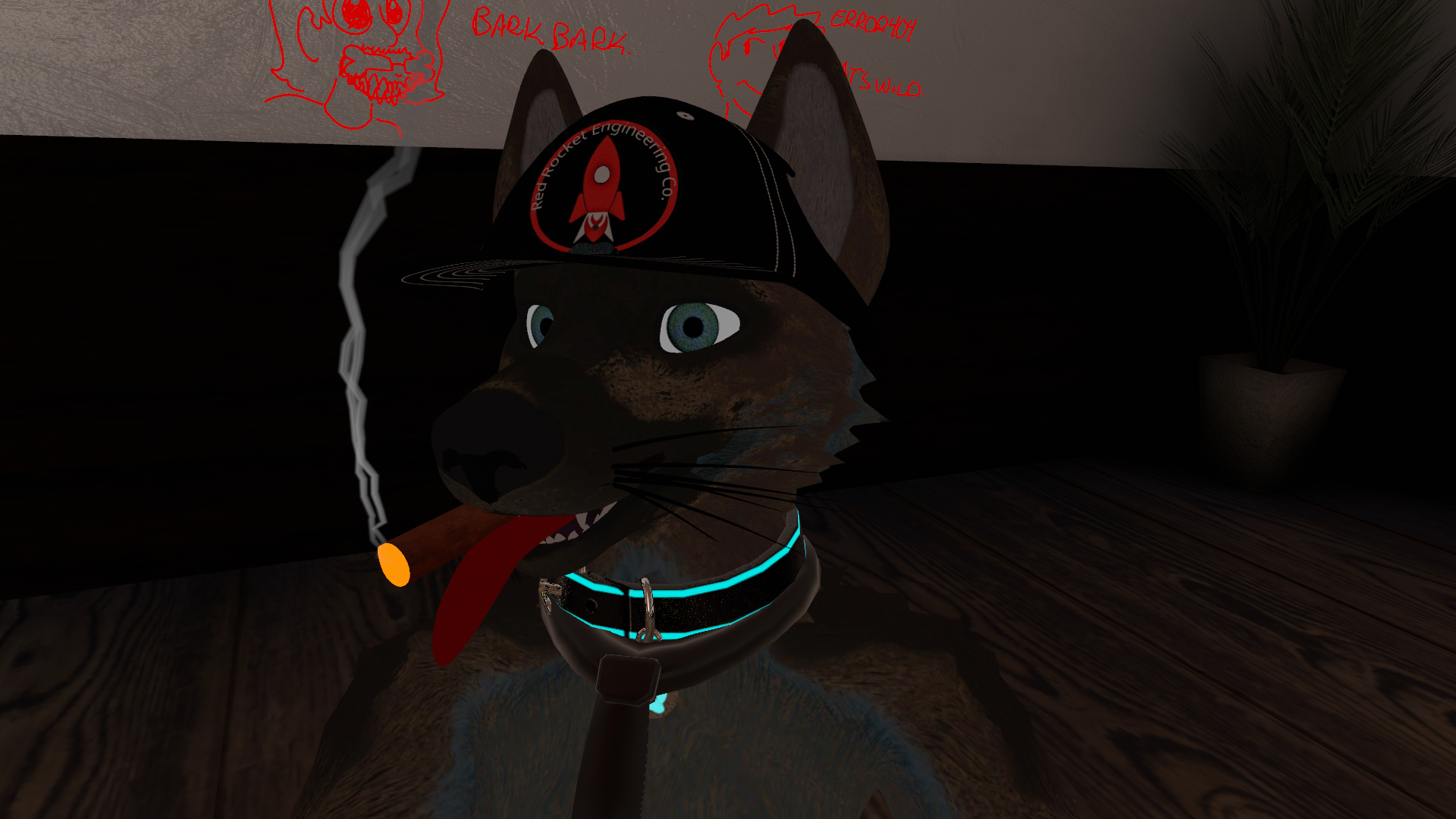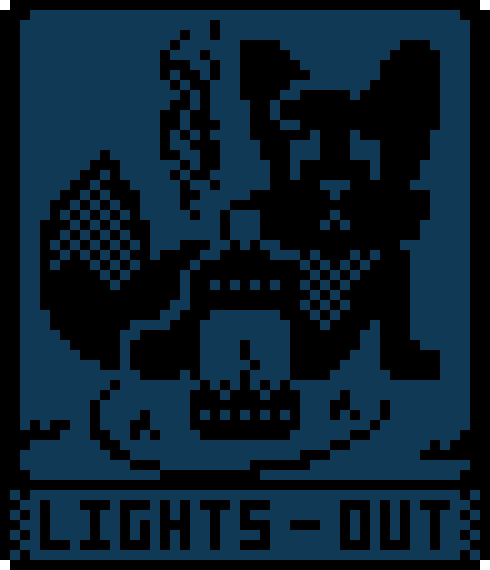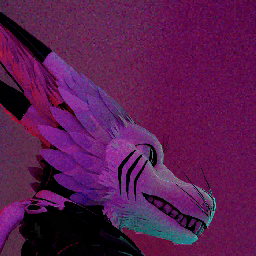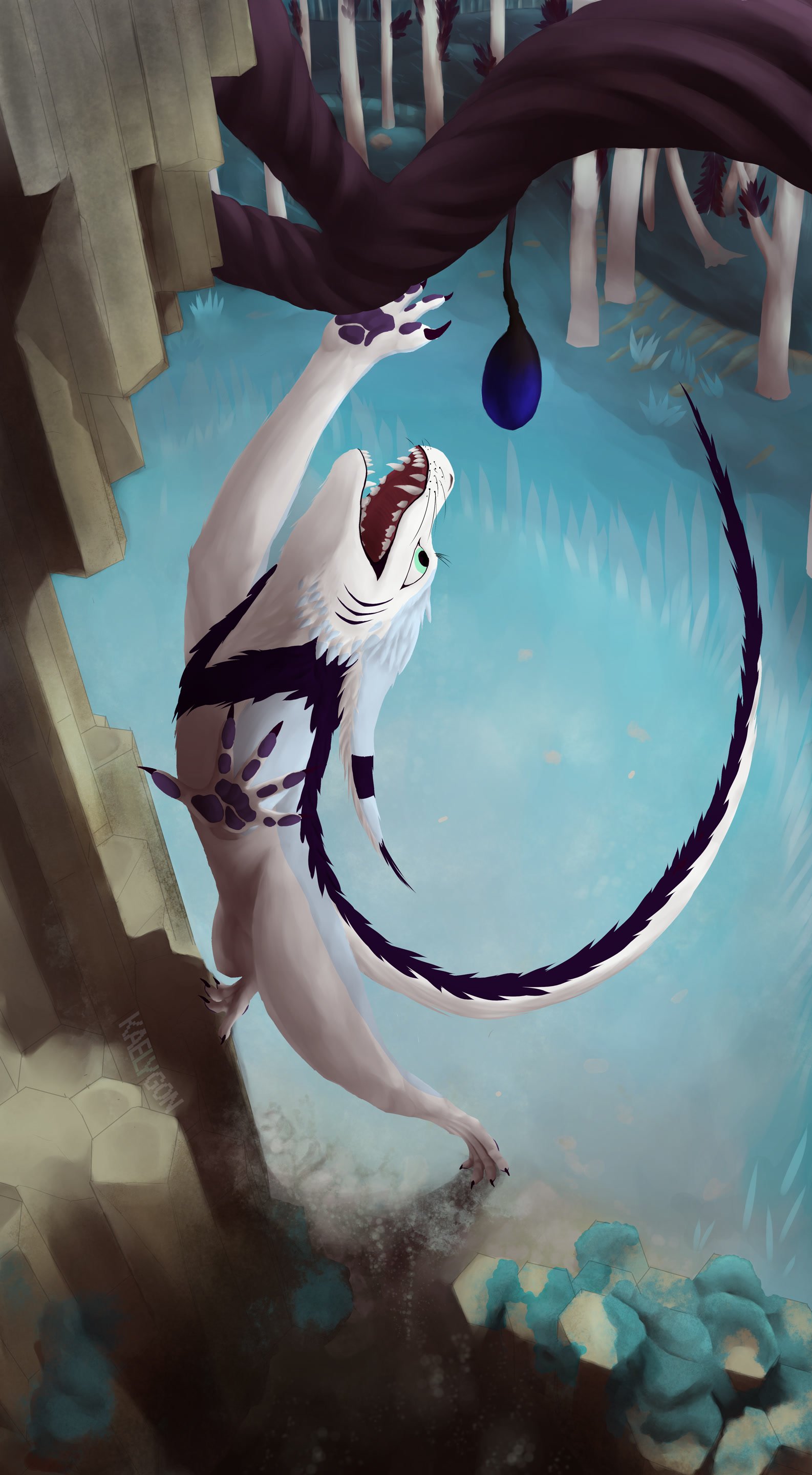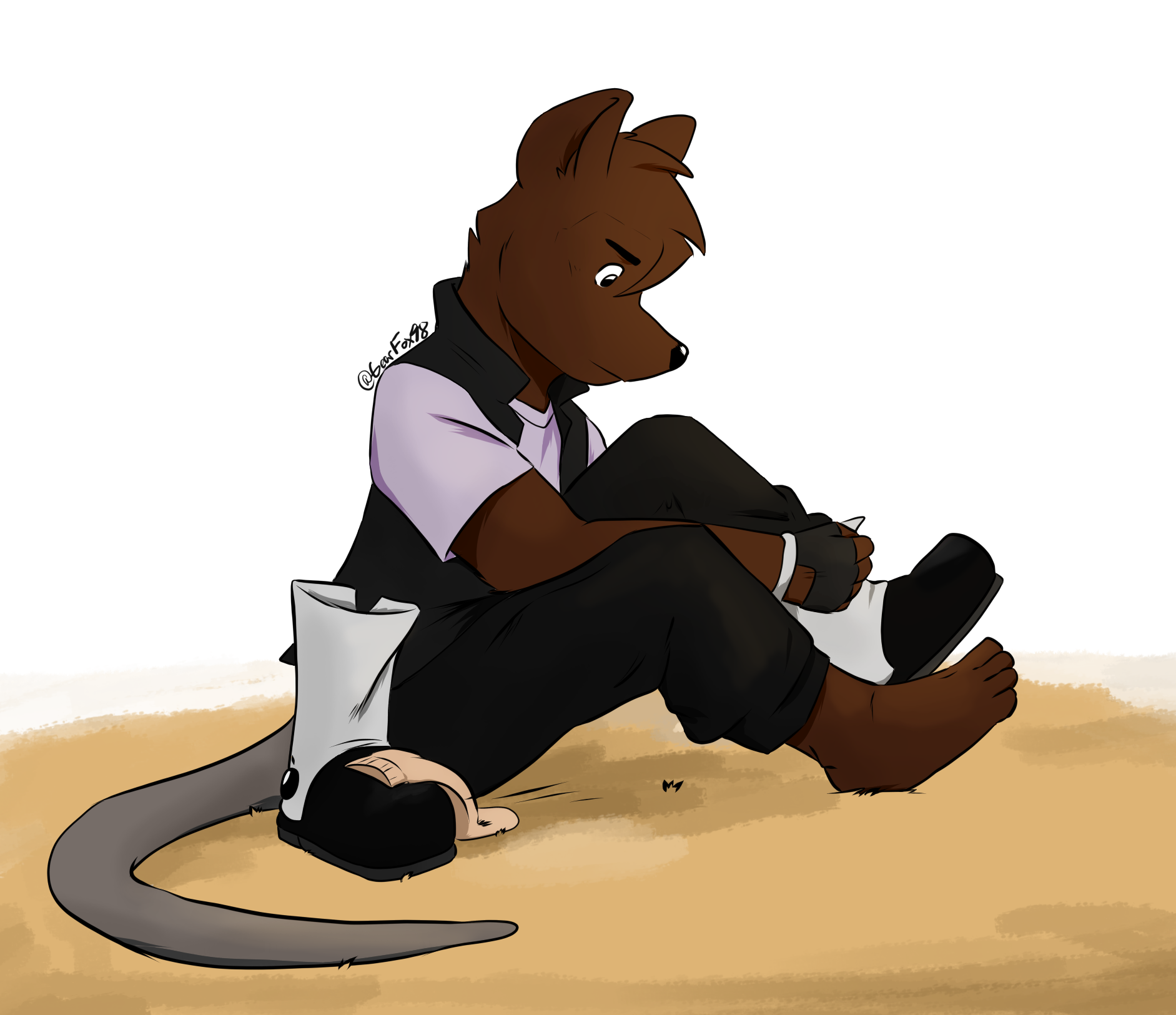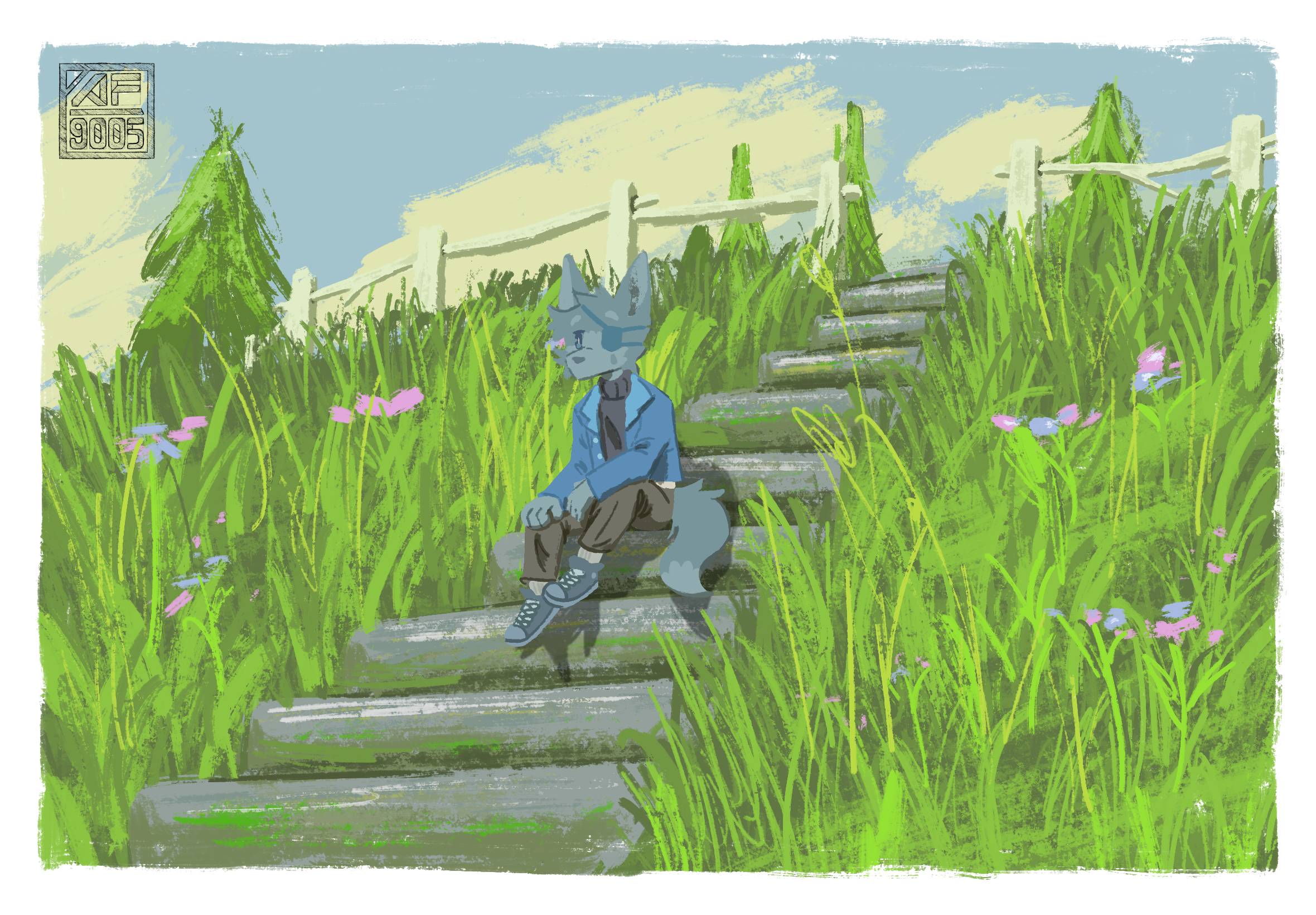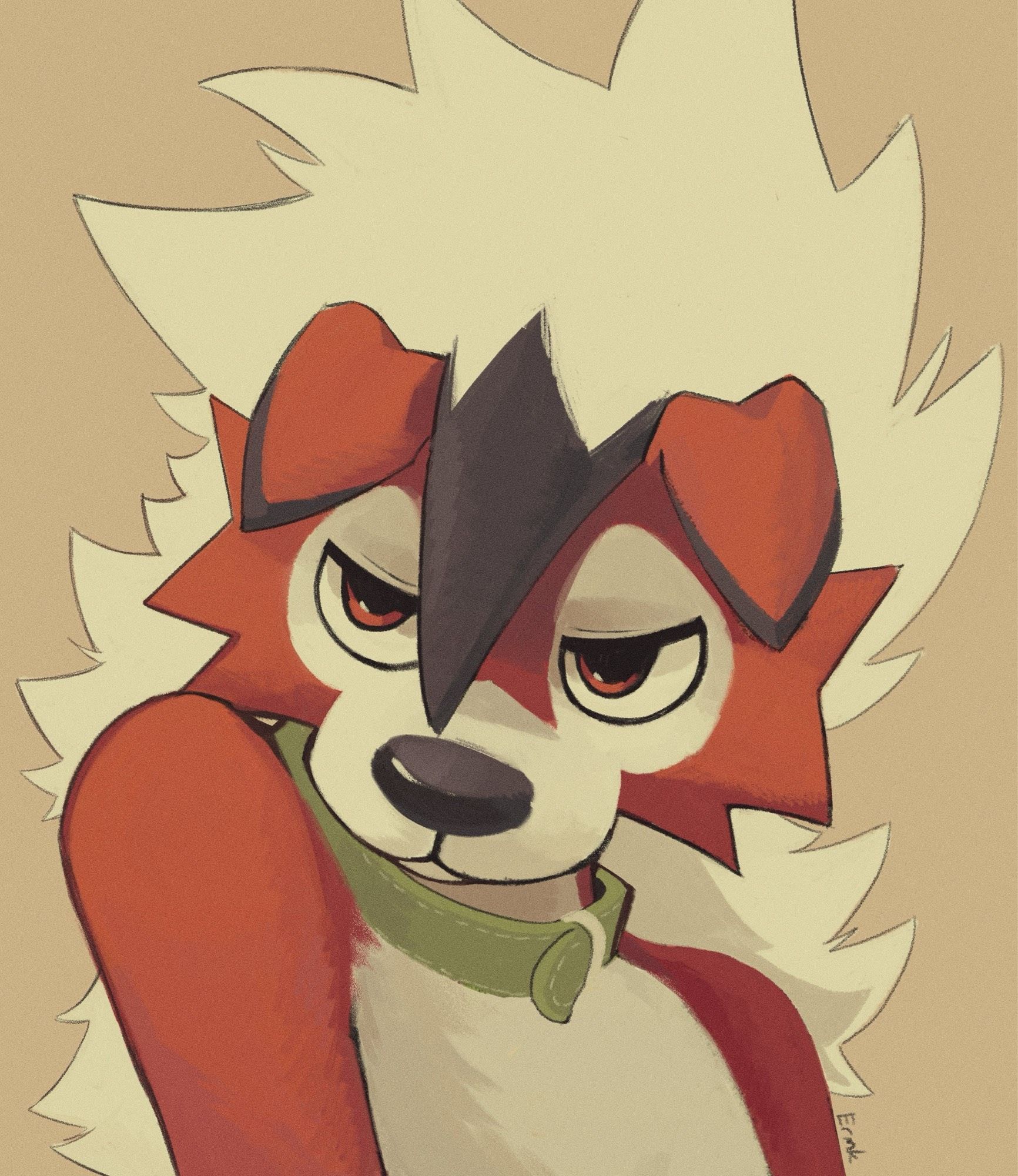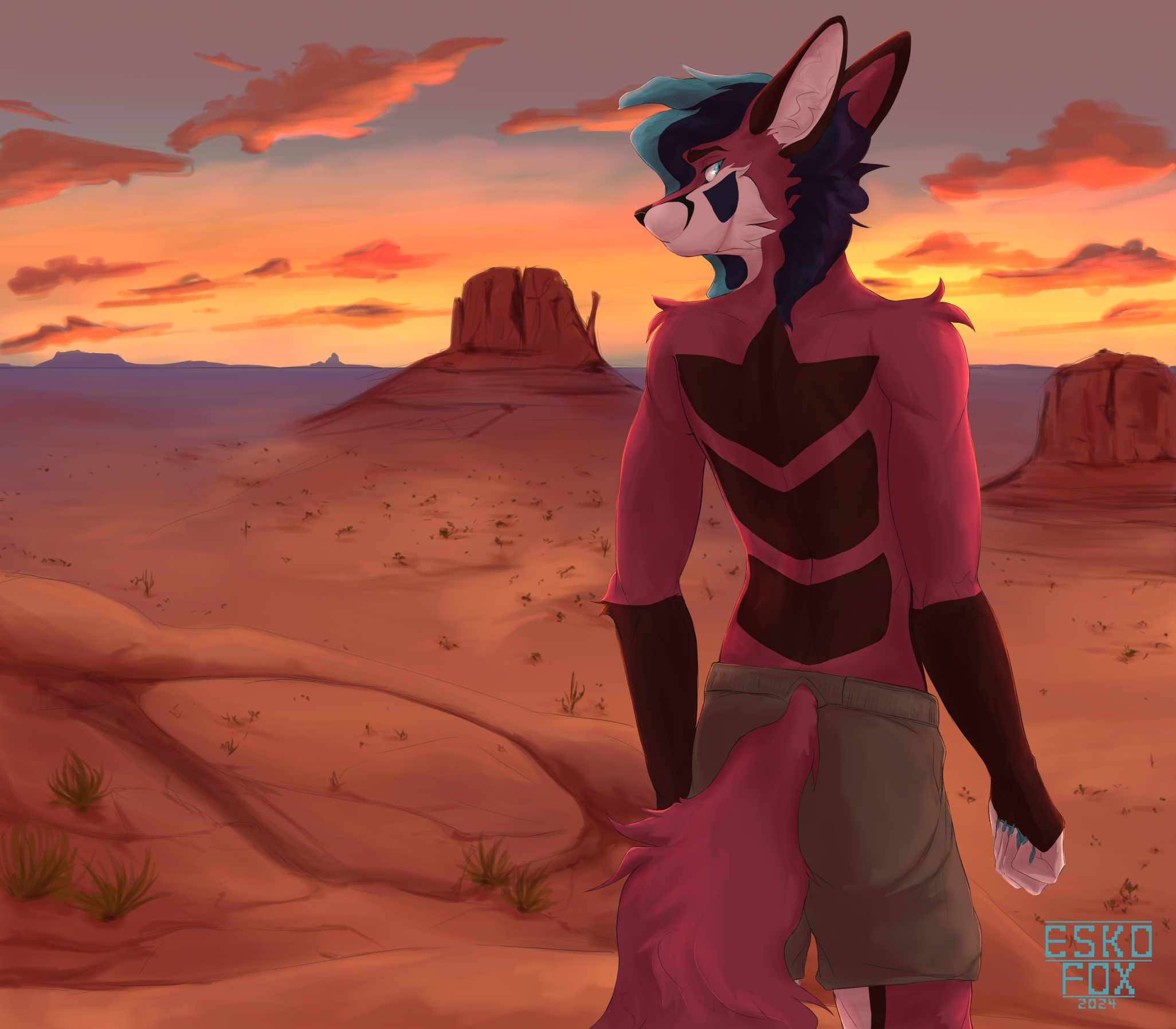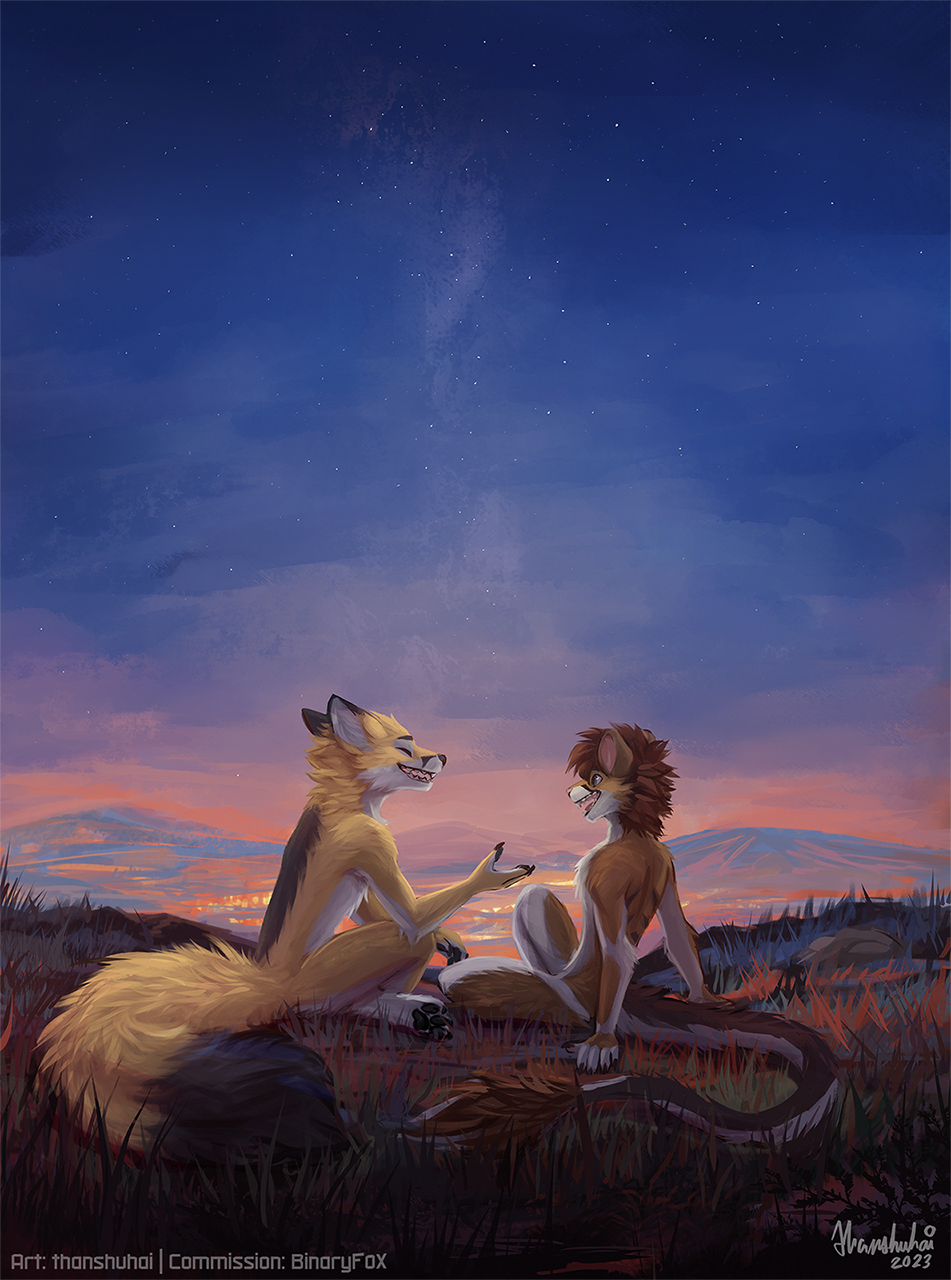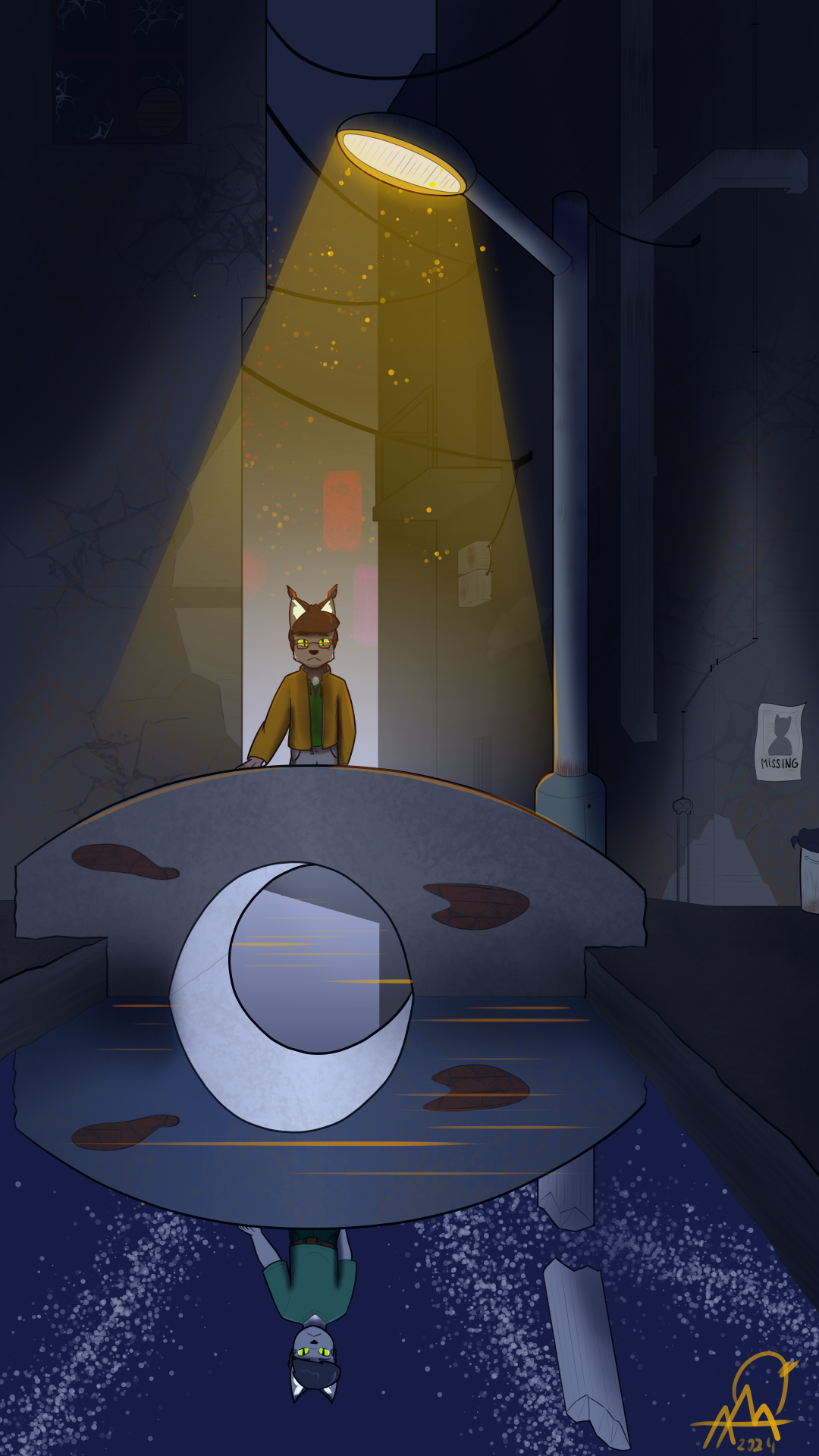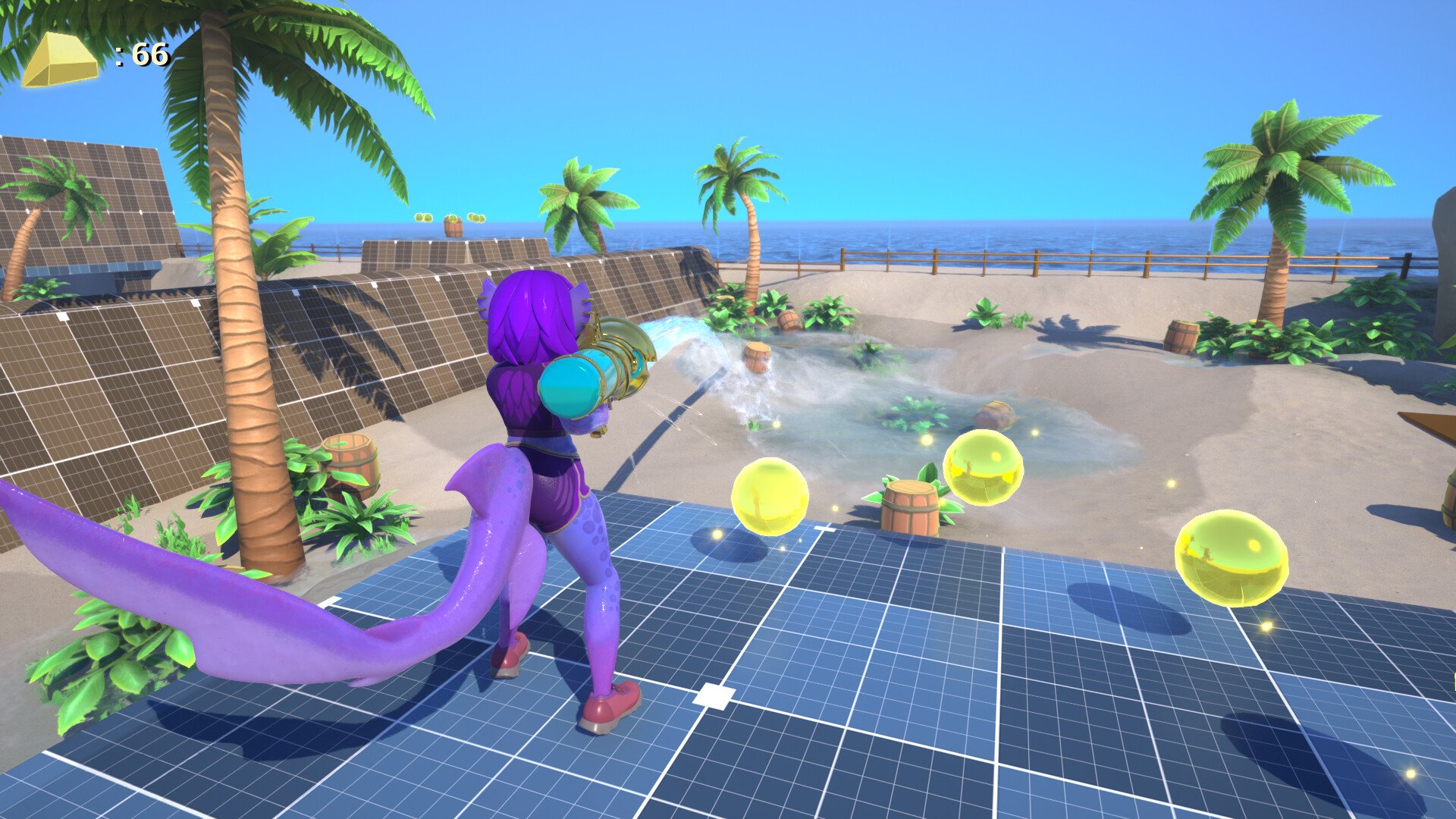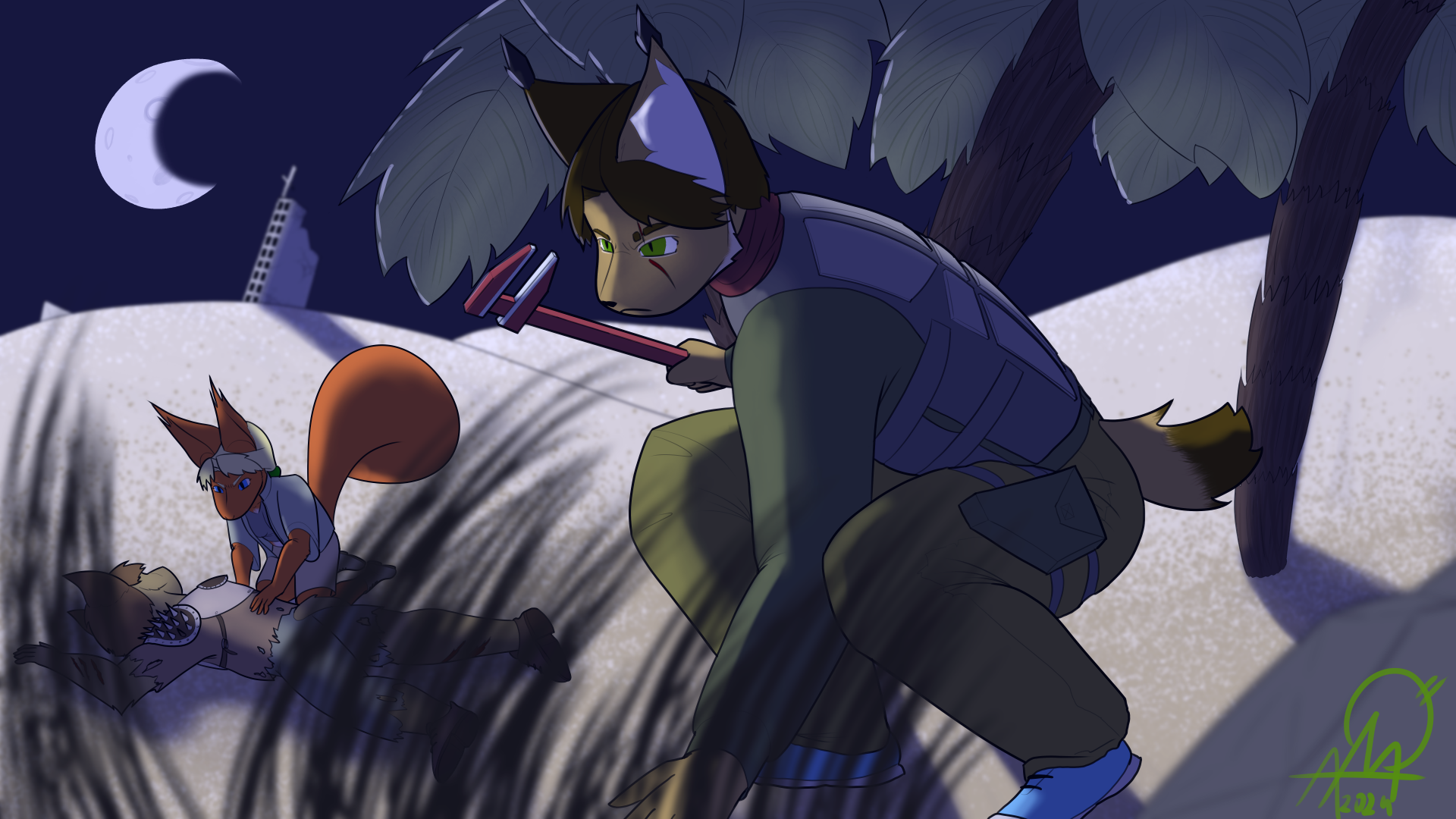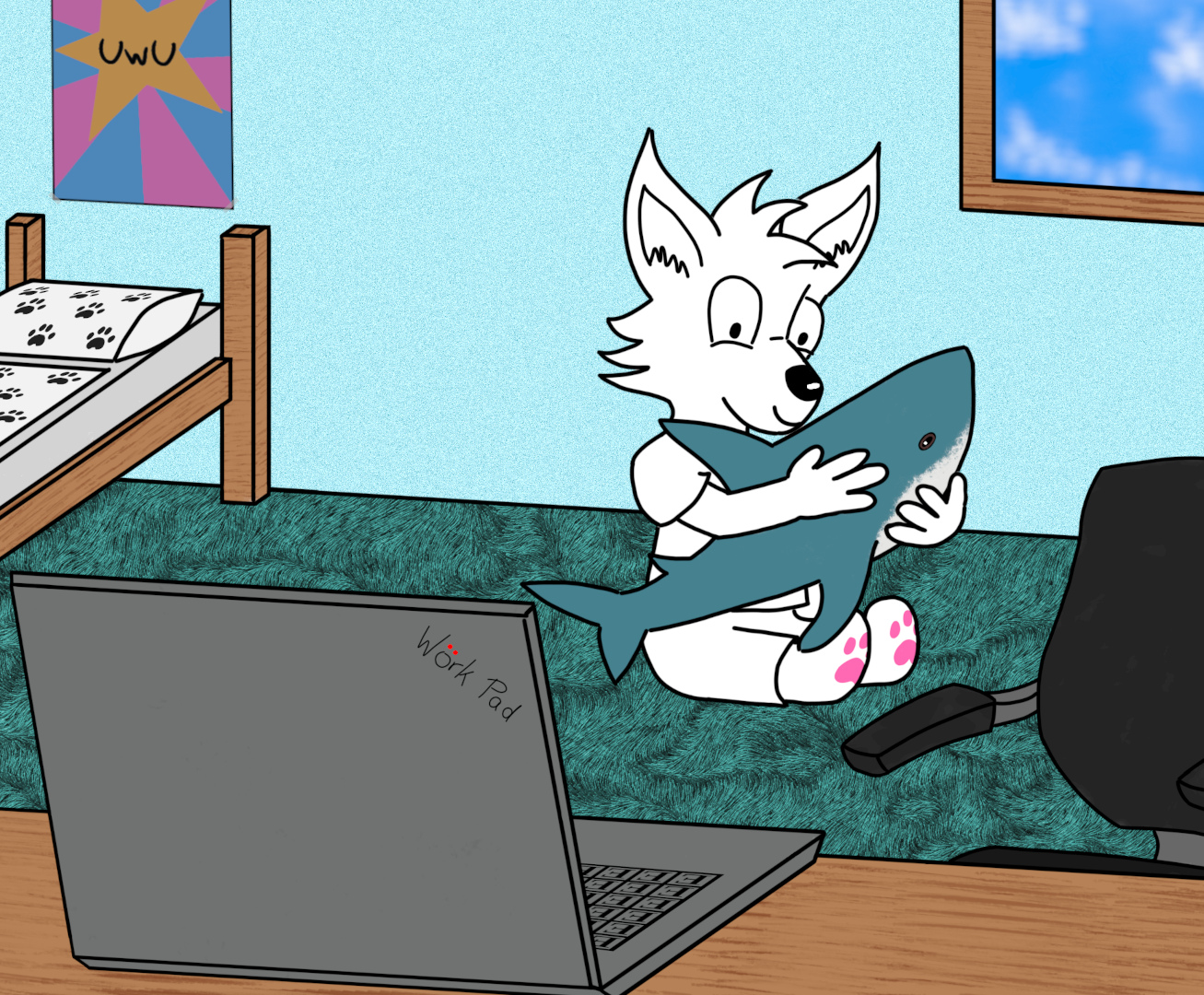**Lacertocyon plumocrista** (feather crested lizard dog), also known as Feather Maned Dragon or simply Maned Dragon.
Despite the name and similarities, L. plumocrista isn't directly related to nowadays reptiles or canids, but it shares similar traits.
Kingdom: Animalia
Phylum: Chordata
Class: Mammalia
Order: Carnivora
Family: Lacertotheriidae
Genus: Lacertocyon
Species: plumocrista
Average size: 100 cm at withers, weight 45 kg
Speed: Up to 50 km/h in short sprint
**Traits**
Warm-blooded, Mammal, Predator, Omnivore, Venomous
**Appearance**
Whole body covered in thin fur.
Feathered mane reaches from head down to end of the tail. The mane can puff up to appear bigger when threatened.
Long ears with tufts at the end.
Depending on the environment, color can vary between yellows, browns, and greens. Light countershading.
Canine like teeth.
Whiskers as wide as the body front profile.
Five 3-segmented fingers and four 2-segmented toes, which are closer to reptilian hands than canid.
Head is similar reptiles like Komodo dragons and lack rhinarium, but smell receptors are still located in nasal cavity.
L. plumocrista has long digitigrade legs to be able to see in tall foliage. Making their run look similar to Maned Wolves.
**Behavior**
Diurnal. Doesn't have great dark vision, as trichromatic color vision is more advantageous in foraging.
Habitat is dry tropical forest and semiarid desert. Ideal temperature when the species is active is around 10-25C.
Solitary hunters during the day, but they may have overlapping territories. Despite this, they are rarely aggressive against others of the same species unless food is scarce.
Hunts prey usually not bigger than 60 kg.
Omnivorous. Often forages and eats various vegetable matter.
When food is very scarce, it can resort to scavenging, and its stomach acid is strong enough to digest bones.
Communicate via howls and barks or roars similar to Maned wolves.
**Reproduction**
Sexual organs are similar to some aquatic mammals. The males don't have external testis, and both males and females have a genital slit.
During mating and nursing litter, the pair may share territory.
Gives live birth to a litter of size 2 to 6, which is nursed by the female and sometimes by both parents.
Very little sexual dimorphism.
**Venom**
Has venom glands in the lower jaw. Some of the bottom teeth have grooves for the venom.
Venom is useful if the prey is too big to be disabled quickly as a threat by just teeth and claws.
If the prey becomes troublesome to kill, L. plumocrista may stalk the prey until the venom takes effect.
The venom may also be used in defense, as it induces intense pain to repel the attacker.
Venom effects and potential analogs
Intense pain: Bradykinin, Capsaicin
Muscle paralysis: Alpha-latrotoxin, Maurotoxin, Tetrodotoxin
Venom spread promoters: Phospholipases, Metalloproteinases, Vasodilator
Fictional lineage would have needed to diverge far in the past if this species had evolved on earth, as it has such an unusual mix of traits.
Amniota -> Therapsida (279.5 mya) -> Cynodontia (259 mya) -> Eutheria (145 mya) -> ... -> Lacertotheriidae
L. plumocrista evolved from a semiaquatic mammal more akin to crocodiles in their hunting habits.
Edit: formatting new lines. Newlines never work in forums properly

